*NURSING > QUESTIONS and ANSWERS > ATI COMPREHENSIVE ATI A / QUESTIONS AND ANSWERS GRADE A (All)
ATI COMPREHENSIVE ATI A / QUESTIONS AND ANSWERS GRADE A
Document Content and Description Below
ATI COMPREHENSIVE ATI A • A nurse in a LTC facility notices a client who has Alzheimer’s disease standing at the exit door at the end of the hallway. The client appears to be anxious & agitated. ... What action should the nurse take? ANS: Escort the client to a quiet area on the nursing unit. • A client c Alzheimer experiences chronic confusion. Guiding the client to a quiet, familiar area will help decrease agitation. They will be unable to follow instructions/commands. • A nurse is assisting with the plan of care for a client who has a continent urinary diversion. Which intervention should the nurse plan to implement to facilitate urinary elimination? ANS: Use intermittent urinary catheterization for the client at regular intervals. • A continent urinary diversion contains valves that prevent urine from exiting the pouch; therefore, the nurse should plan to insert a urinary catheter at regular intervals to drain urine from the client’s pouch. • A nurse is assisting with an education program about car restraint safety for a group of parents. Which statement by the parent indicates an understanding of the instructions? ANS: “My 12YO child should place the shoulder-lap seatbelt low across his hips.” • When a child is old enough to only use a shoulder-lap seatbelt, he should place it low across his hips rather than over the abdomen to reduce risk for injury during motor vehicle crash. • A nurse is reinforcing teaching about strategies to promote eating with a client who has COPD. Which instructions should the nurse include in the teaching? ANS: Drink high-protein and high-calorie nutritional supplements. • The nurse should instruct the client to drink high-protein and high-calorie nutritional supplements to maintain respiratory muscle function. COPD causes respiratory stress that leads to hypermetabolism and wasting of the client’s muscle mass. • When removing PPE after direct care for a client who requires airborne & contact precautions, which PPE is removed first? ANS: Gloves • The greatest risk is contamination from pathogens that might be present on the PPE; therefore, the priority action for the AP is to remove the gloves, which are considered the most contaminated. • A nurse is inspecting the skin of a newborn. Which finding should the nurse report to the PCP? ANS: Generalized Petechiae • Petechiae are an expected finding over the presenting part of the newborn, such as on the forehead in a brow presentation, & also anywhere on the head of infants who had a nuchal [Show More]
Last updated: 2 years ago
Preview 1 out of 17 pages
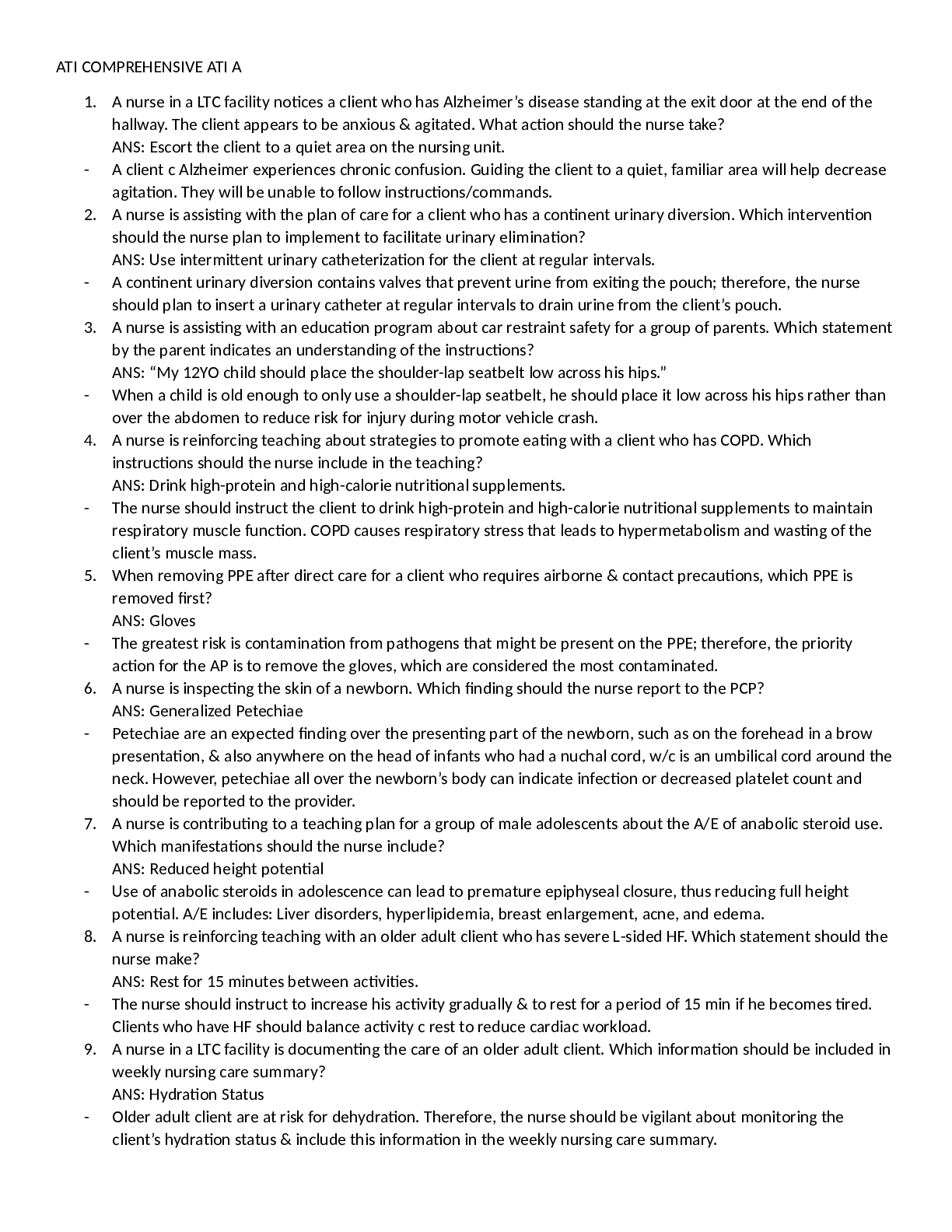
Buy this document to get the full access instantly
Instant Download Access after purchase
Buy NowInstant download
We Accept:

Reviews( 0 )
$9.00
Can't find what you want? Try our AI powered Search
Document information
Connected school, study & course
About the document
Uploaded On
Mar 06, 2021
Number of pages
17
Written in
Additional information
This document has been written for:
Uploaded
Mar 06, 2021
Downloads
0
Views
85


.png)


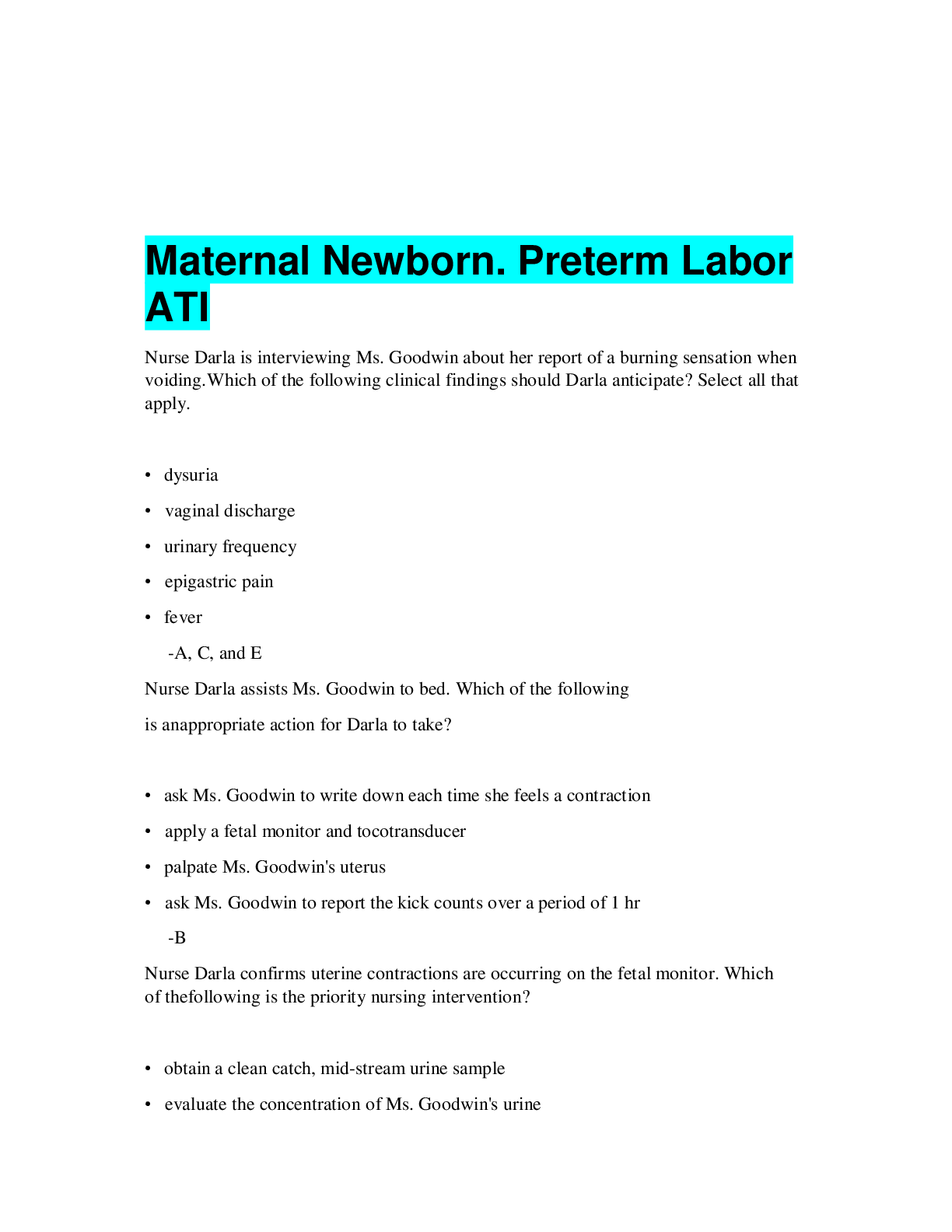



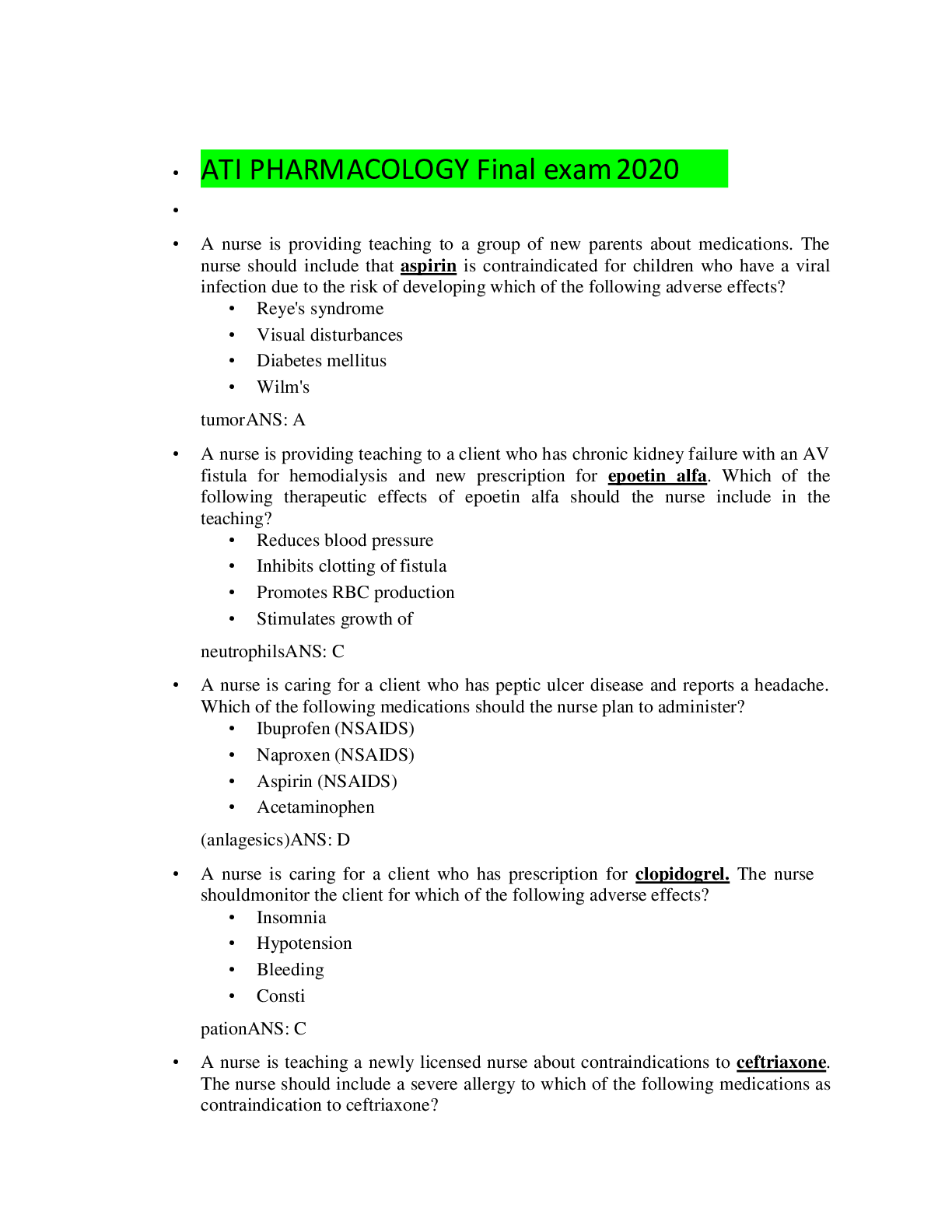
.png)



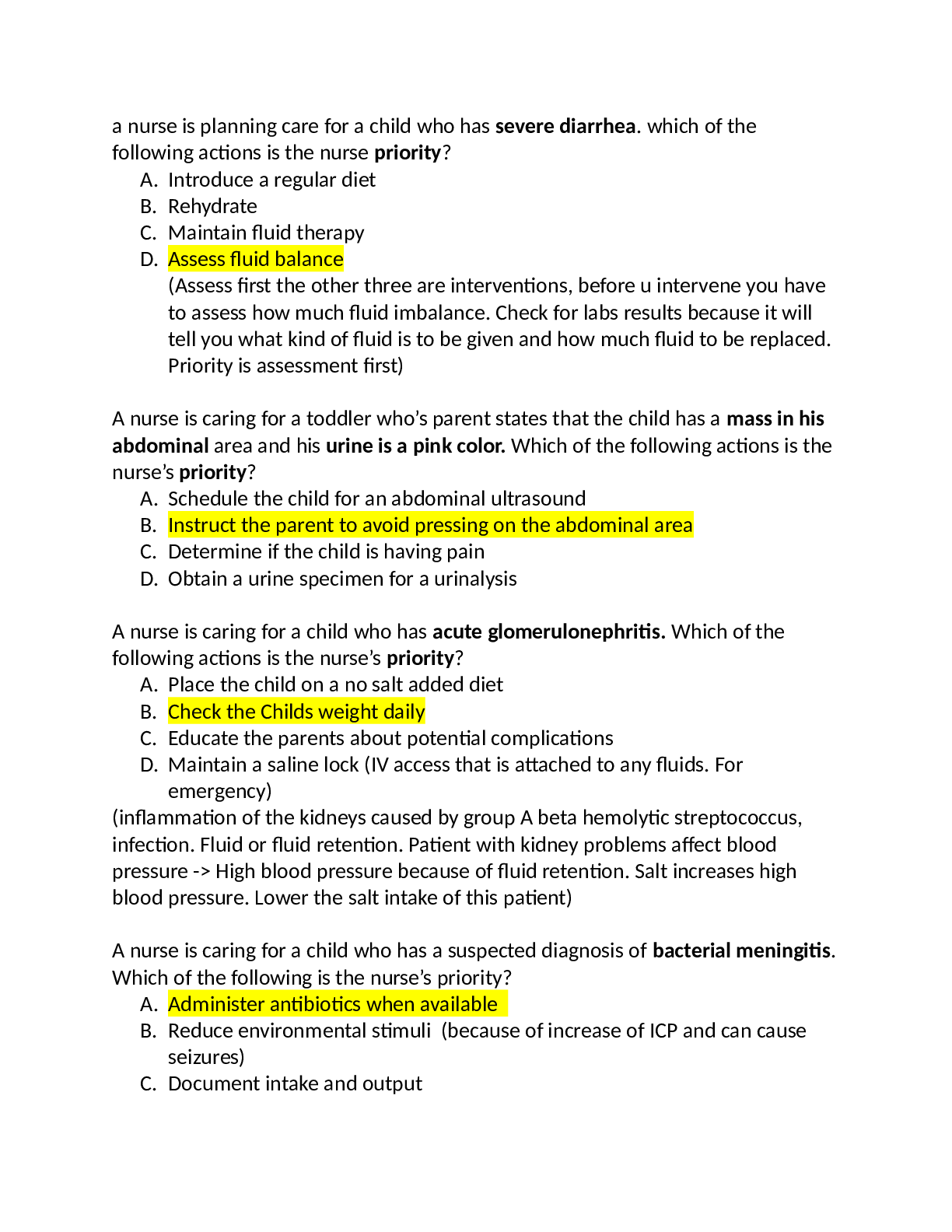



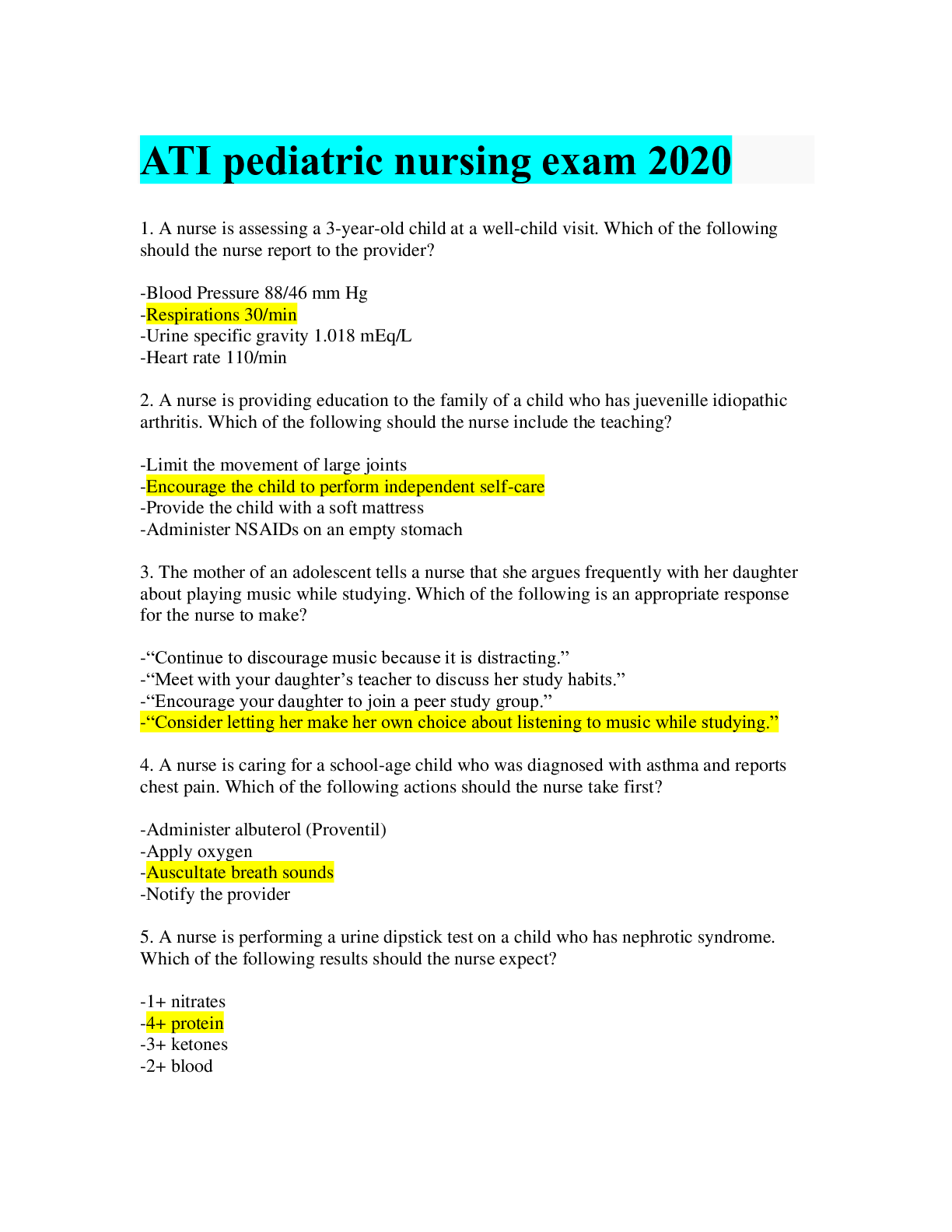



 – Miami Dade College.png)
Perop.png)


